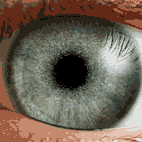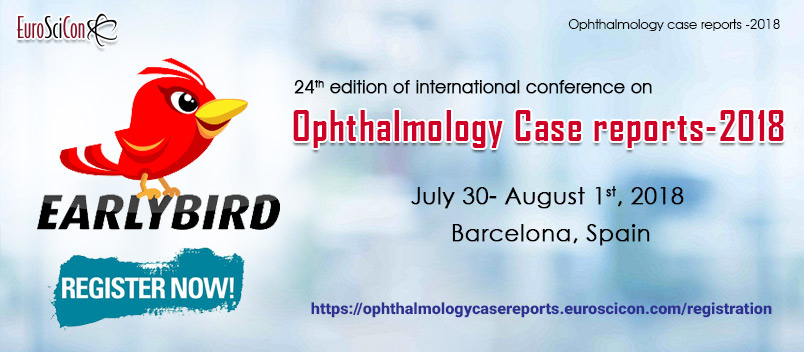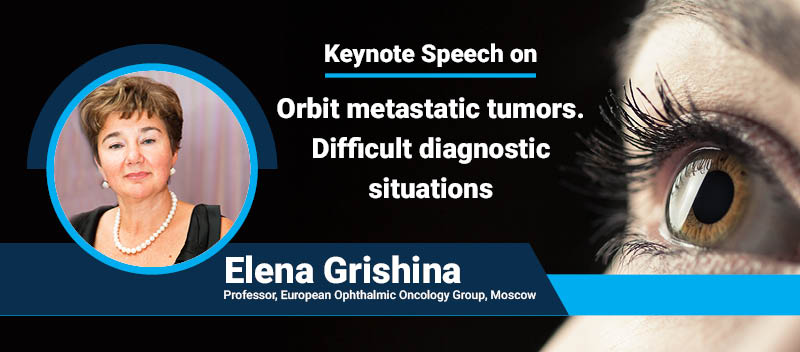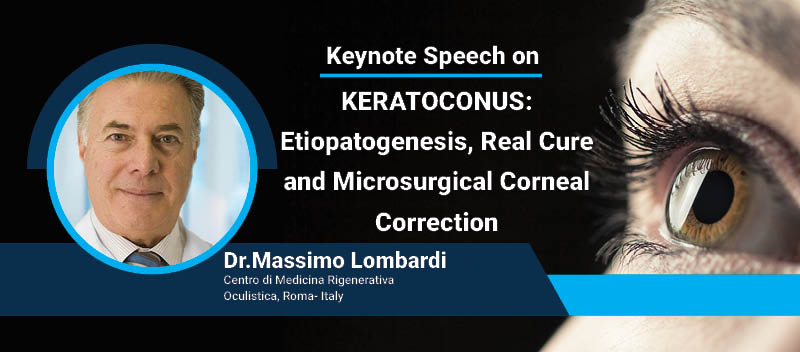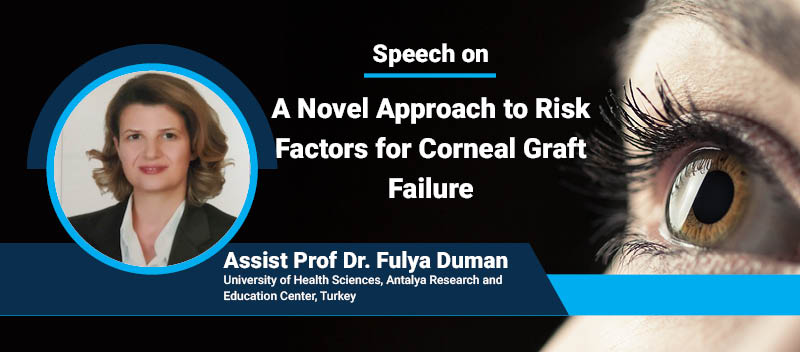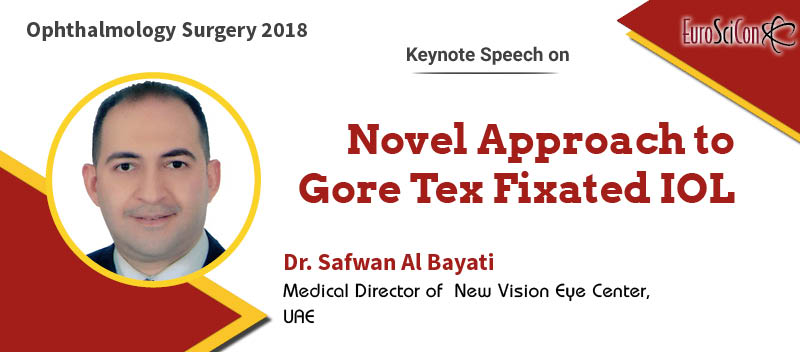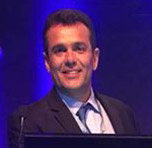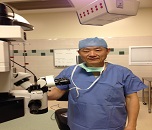Ophthalmology Case reports 2018
About confrence
EuroSciCon Ltd welcomes you to attend the International Conference on "24th Edition of International Conference on Ophthalmology Case reports Euroscicon 2018 during July 30-August 1, 2018 at Barcelona, Spain.
Ophthalmology case reports is very crucial area of research. The theme of this year’s meeting which is going to held on July30-August 1 is " Exploring The Importance Of Case Reports In Ophthalmology" which will provide an international platform for discussion of present and future challenges in Ophthalmology treatments regarding various diseases.
Case reports regarding various diseases aims clinical and experimental examination of eye disorders and therapeutics inside of the fields of ophthalmic Research. Ophthalmology Case Reports 2018 maximizes the opportunity to interact with and learn from your peers from across the country and across the globe it held with the discussions on various diseases.
WHY TO ATTEND ?
EuroSciCon is the longest running independent life science events company with a predominantly academic client base. Our multi-professional and multi-specialty approach creates a unique experience that cannot be found with a specialist society or commercially.
Ophthalmology case reports 2018 includes international workshops, lectures and symposia, designated registration area, a refreshment break and lunch. Ophthalmologists , Scientists, can join the European Ophthalmology Congress as an international member to receive discounts during the registrations. So we invite you to come and join the leading experts and allied professionals on the behalf of the Ophthalmology case reports July 30- August 1, 2018, Barcelona , spain. Spain to keep up with the rapidly accelerating pace of change that is already having an impact on the field Ophthalmology and will continue to in the future.
Euroscicon are corporate members of the following organizations
- Royal Society of Biology
- IBMS
- British Society for Immunology
- Rare Care UK
- Opportunities for Conference Attendees
For Researchers &Faculty:
- Speaker Presentations
- Poster Display
- Symposium hosting
- Workshop organizing
For Universities, Associations & Societies:
- Association Partnering
- Collaboration proposls
- Academic Partnering
For Business Delegates:
- Speaker Presentations
- Symposium hosting
- Book Launch event
- Networking opportunities
- Audience participation
For Companies:
- Group Participations.
- Workshop organizing
- Scientific Partnering
- Product launch
- Marketing and Networking with clients
- Sponsorships opportunities
- Exhibitor and Vendor booths.
Why Barcelona?
Sprawled between the beaches of the Mediterranean and the hills of Montjuïc, Barcelona is a city whose personality bursts at every natural seam. The capital of Catalonia, one of Spain’s 17 autonomous communities, with a population of 1.6 million, Barcelona is also known as the country’s most progressive city, always on the cutting-edge of European art, fashion and cuisine.
Institute Comtel d'Oftalmologia in Barcelona:
Institute Comtel d’Oftalmologia is a medical organization which has the specialization in visual health care which has been providing medical care in Barcelona regarding ophthalmology for more than 25 years.
Today it comprises four different entities:
- ICO 1: At Vía Augusta 61, where you will find our 24-hour, 365 days/year A&E department and our specialty and sub-specialty outpatient clinics.
- ICO 2: At Vía Augusta 48, where our Optometry Services and Pediatric Ophthalmology Service are located.
- CEM Clinic: At Blames 253, where we have our Surgical Services and the Diagnostic Testing Service.
- Foundation VER: Which manages all international cooperation and research activity.
The Castaneda Institute of Ophthalmology in Barcelona :
The Castaneda Institute of Ophthalmology was founded in 1954. Tradition, pioneering use of the most advanced technologies and techniques, scientific research and a truly personalized treatment of patients enabled The Castaneda Institute of Ophthalmology to be regarded internationally as one of the focal points in ophthalmic surgery.
The Castaneda Institute of Ophthalmology includes all Ophthalmic surgical specialties, which are structured in departments led by experts in each specialty: Pediatric Ophthalmology and Strabismus, Refractive Surgery, Cataract, Eye Plastic Surgery, Diagnosis and Treatment of Glaucoma, Vireo-Retinal Pathologies and Anterior Segment Pathologies. The Castaneda Institute of Ophthalmology offers patients a complete ophthalmologic examination, after carefully analyzing all diagnostic tests, to propose the most appropriate treatment for each case
Sessions/ Tracks:
Track-1: Clinical Ophthalmology

Clinical ophthalmology is the branch of science which deals with eye physiology, eye diseases and treatment modalities. Clinical ophthalmology perform diagnose and operates on eyes, by clinical techniques a multitude of diseases and conditions can be diagnosed from the eye.The research in this field of ophthalmology to worldwide audience, developments techniques are important for research community. This give special importance to conceptual breakthroughs in the field of ophthalmology. It emphasis the novel discoveries to treat disorders of eyes such as glaucoma, cornea, cataracts, ocular oncology, uveitis, lasik, refractive and ophthalmic surgery.
This field bound a wide area of knowledge in important parts such as retina, ocular plastics, pediatric ophthalmology, vitreo-retinal surgery, retinal ophthalmology, myopia, amblyopia (lazy eye), burning eyes, clinical trials Related to eye diseases ,color blindness, cornea transplant, dry eye infographic, dry eye syndrome, eye allergies, eye herpes, eye twitching, floaters, flashes and spots , Fuchs' corneal dystrophy, keratoconus, macular dystrophy, ocular hypertension, ocular migraine, peripheral vision loss, red eyes etc.
- Lacrimal Drainage System.
- Clinical Evalution and Features regarding Ophthalmology.
Track-2: Case reports on Cataract-Blurred vision:
Cataract is a disease that makes clouding of the lens in the eye that lies behind the iris and pupil, which leads to a decrease in vision. Those are the most common cause of the vision loss in the people over the age in between 35-40They often develop slowly and can affect single or both eyes. Cataract symptoms may include faded colors and blurry vision, halos around light, trouble with bright lights, trouble in seeing at night. This leads to difficult in driving, reading, or recognizing faces. Poor vision caused by this disease may also result in increased risk of falling and depression. They are the cause of half of blindness.
Cataract surgery:

when the eyes lenses get the opportunity to be shady, Cataract evacuation is for the most part supported and in this way Cataract surgery like Cryo-extraction is performed. In Cataract surgery, the lens inside the eye that has wound up shady is removed and supplanted with a mimicked lens (called an intraocular lens, or IOL) to restore clear vision. The system routinely is performed on an outpatient start and does not require an overnight stay in a center or other thought office. Most present Cataract surgery integrates the usage of a high-repeat ultrasound device that segregates the cloudy lens into minute pieces, which are then carefully removed from the eye with suction. The up and coming Refractive Surgery Conference may likewise concentrate on Cataract surgery as this is the most broadly recognized eye sickness everywhere throughout the world.
- Different types of cataracts.
- Signs and symptoms
- Causes of cataracts
- Diagnosis treatment
- Preoperative evaluation
- Operation procedure
Track-3:Case reports on Glaucoma:
Glaucoma is a disease related to the eye. This disease can cause disorder to the eye which causes damage to the optic nerve that carries the particular information from eye to our brain. This disease have no symptoms in our early age ,if we find problems with our sight, then its clearly states the vison loss has already occurred and it is in high stage may be its difficult to stop until we undergo with the treatment.
This glaucoma is usually known as “THE SILENT THIEF OF SIGHT”, Because it doesn’t causes any pain and no symptom will be seen until we are at high risk regarding the loss of vison. Up to that this glaucoma stays undetected till the optic nerve causes damage.
As per mostly seen cases this disease is mostly associated with higher pressure than normal pressure inside our eye. The higher pressure is known as “OCULAR HYPERTENSION”, and the normal pressure is known as “INTRA OCULAR PRESSURE”. There is still chances to get them treated if symptoms has seen, otherwise it may lead to blindness or visual field loss.
- TYPES OF GLAUCOMA
- Primary open angle glaucoma
- Acute angle closure glaucoma.
- Normal tension glaucoma
- pigmentary glaucoma
- Secondary glaucoma
- Congenital glaucoma
- Diagnosis, Screening And Tests For Glaucoma.
- Glaucoma treatments.
- Prevention of glaucoma.
- Laser Trabeculoplasty surgery.
- Shunts And Implants For Glaucoma.
- Non-penetrating Glaucoma Surgery (NPGS).
- The Future Of Glaucoma Treatment.
Track-4: Case reports on Acanthamoeba Keratitis:
Acanthamoeba Keratitis is a unseen disease which the amoeba can occur at the corner of the eye which results the permanent loss of visual on eyes. Its mostly can causes with the contact lensesThey should be properly dis-infected before we wear it. While swimming or in cases of surfing it should be removed. there are many cases regarding to ACANTHAMOEBA ,who doesn’t wear contact lenses.This disease can cause by a free living amoeba its called as single celled living organism. They can find in soil, dust, water sources. It can often be cured without any long-term complications.
- Prevention of Acanthamoeba Keratitis
- Diagnosis.
- Epidemiology.
- Keratoplasty treatment.
- polyhexamethylene biguanide treatment.
Track-5: Case reports on Amblyopia:
Amblyopia is usually known as “LAZY EYE”. This amblyopia condition can be noted by reduced vision and its cannot correctable by glasses or contact lenses nor any eye disease. The brain for some similar reasons, does not fully acknowledge the images seen by the lazy eye.. This affects to only one single eye but it may manifest the reduction of our eye vision in both. it states that 3% of children under six years will have some form of amblyopia. There are two regions in the eye, cornea and lens, which helps us in focusing on images. In a normal healthy eye, both these focusing features have a completely smooth curvature. There is a similar disease known as “STRABISMUS”. This is also called as crossed eyes. Strabismus is a condition in which the eyes do not properly align with each other when looking at an object. The condition may be present occasionally. If it present during a large part of childhood, it may result in AMBLYOPIA or loss of depth perception. If ir present during adulthood, it can be result in double vision.
This amblyopia can also b treated by patching. Its very effective way of treating amblyopia. It allows the weaker eye to get stronger. By closing one eye by wearing the patch and making the other eye (lazy eye) to focus on the things. As we shown in the fig.2 , the child is wearing a patch on the normal eye. As its is hard to make the young children waring patch ,it needs lot of support from parents.
- Different types of amblyopia.
- Different types of patches.
- Vision screening .
- Treatment.
- Case report : In some of the cases, treatment for amblyopia may not succeed in substantially improving vision. It is hard to decide to stop treatment, but sometimes it is best for both the child and the family.
In most cases loss of vision from amblyopia can be prevented or successfully treated if started early enough and if the degree of amblyopia is not extreme
Track-6: Case reports on Astigmatism:
Astigmatism is called as refractive error which states that our eye will not focus light on the retina. This can be result to blurred vision at all distances. Astigmatism symptoms can include eye strain, headache and trouble in driving at night. If it occurs in early life it can result to amblyopia, which is also known as LAZY EYE.
The cause of this disease is unclear, related to genetic factors. The unseen mechanism involves an irregular curvature of the cornea in the lens of the eye. This can be diagnosed by the eye exam. The treatment for this amblyopia can be done in three ways “GLASSES,CONTACTLENS, SUGERY”. GLASSES are the simplest treatment for it. CONTACT LENSES can provide the wider space for vison, whereas refractive surgery will permanently changes the shape of the eye.
- SIGN AND SYMPTOMS.
- TYPES OF ASTIGMATISM.
- DIAGNOSIS TREATMENT.
- Refractive Surgery for Astigmatism
- LASIK Surgery
- Photorefractive Keratectomy (PRK)
- Laser-Assisted Subepithelial Keratomileusis (LASEK)
- Radial Keratotomy.
- Prevention of astigmatism.
Track -7: Case reports on Corneal Ulcer:
Corneal Ulcer is an disease with open sore or epithelial defect with underlying inflammation on the cornea, which is the clear structure in the front of the eye. The cornea overlies the iris the colored part of the eye. And this is separated from the iris by the fluid in the anterior chamber of the eye. It looks like gray to white opaque or translucent area on the normally clear and transparent cornea. Most corneal ulcer Infections are preventable.
Similarly there are variety of causes of corneal ulcers, including infection, physical and chemical trauma .Most corneal ulcers are caused by infections. The infections that cause corneal ulcers and are common in contact lens wearers. Bacteria can directly invade the cornea if the corneal surface has been spoiled. Symptoms of corneal ulcers include: redness of the eye, severe pain and soreness of the eye, the feeling of having something in your eye, tearing ,pus or other discharge ,blurred vision, sensitivity to light, swelling of the eyelids ,a white spot on your cornea that you may or may not be able to see when looking in the mirror.
- Types of corneal Ulcers.
- Evaluation And Treatment Of Corneal Ulcers.
- prognosis of a corneal ulcer.
- Superficial and deep corneal ulcers.
- Refractory corneal ulcers.
- Corneal healing.
- Diagnosis.
- Treatment.
- Refractory ulcers.
Track-8: Case reports on Cytomegalovirus (CMV) Retinitis:
Cytomegalovirus (CMV) Retinitis is a disease which is related infection to acquired immunodeficiency syndrome (AIDS) that causes blindness. It is a serious viral eye infection of the retina. Retina is the light-sensing nerve layer that lines the back of our eye .This CMV is a full thickness retinal infection that can lead to retinal breaks and detachments.
It is mostly found in people with weakened immune systems such as “Newborn babies ,the elderly, those undergoing chemotherapy , recipients of organ transplants”. This CMV symptoms seems like floaters, flashes (photopia’s), blind spots (scotomata). Pain and photophobia are uncommon.
- Risk Factors
- Primary prevention
- Diagnosis
- Physical examination
- Retinal Zones of CMV retinitis
- Differential diagnosis
- General treatment
- Surgery
- Prognosis
Track-9: Case reports on Macular Dystrophy:
Macular dystrophy is (very rare) unseen genetic disease that causes vision loss that effects to the back of our eye, it leads to the cell damage in the Area called MACULA, that controls how u see and what is in front of us. This can be caused by the pigment that builds macula’s cells. This substance can damage cells that plays role in a clear central vision. Our sight gets blurry and warped but our peripheral vision is not harmed. so, totally we won’t be blind.
This disease can affect in two types of ages childhood and mid-adulthood. In childhood it causes the different loss of the amount, where as in mid-adult hood vision loss will slowly get worse. It can also passes from parents to children through genes.
- Macular Dystrophy Types.
- Treating Macular Dystrophy.
- Diagnosing Macular Dystrophy.
- Prevention of Macular Dystrophy.
TRACK-10:Case reports on Uveitis:
Uveitis means the inflammation of the uvea. It occurs when the middle layer of the eye ball gets red and swollen. Imagine eye as a hollow ball, the innermost lining layer is the retina, which senses light and helps to send images to your brain and outermost layer is the sclera, the strong white wall of the eye.
It has the many blood vessels that nourish our eye and also those blood vessels that carries oxygen to and from the eye.. It can damage our vital eye tissue, leading to permanent vision loss. it requires an urgent referral and treatment through ophthalmologist to control the inflammation.
- types of Uveitis .
- symptoms and signs.
- causes of uveitis.
- diagnosis of uveitis .
- treatment for uveitis.
- complications that can occur with uveitis.
Track-11: Case reports on Black Eye:
Black eye can occur when we got a injury bruising around the eye or on the face. it cause swelling and dark bruising in the tissue. Then the blood collects other fluids around the eye in the space.Black eye states the sign of the serious injury around the eye. This can be heal in few days , if its not cured by the time it may cause damage to the eye or the eye sight.Black eye can be seen in many cases like if we got hit on eye or nose. if we got hit on the nose then both eyes may leads to swell because of the buildup of fluid in the loose skin beneath the eyes.
- Black eye diagnosis.
- Black eye treatment.
- Prevention of black eye.
- Bilberry extract.
Track-12: Ophthalmology Career & Training:
Ophthalmologists are doctors who spend substantial time in doing treatment and detecting sicknesses of the eye. Such issues can incorporate maladies like cataracts or glaucoma; wounds; and issues with vision, like farsightedness. American Academy of Ophthalmology have renowned and expertise ophthalmologists have more particular preparing in the eye than family specialists and, in opposition to optometrists, have finished therapeutic school and know about general medication. On account of this preparation, ophthalmologists frequently get referrals of patients with genuine eye issue from optometrists and family doctors. Coursework in a therapeutic school program incorporates general wellbeing concentrates, for example, life structures and physiology.
To encourage the forthcoming ophthalmologists, Refractive Surgery 2018 Conference has an exceptional session on ophthalmologists' vocation and preparing.
- Vison Insurance.
- Ophthalmology Community.
Market Analysis
During the period of 2008 and 2009, the global ophthalmology market witnessed a dip during the economic downturn; however, it is difficult to grow at a stable rate due to an increasing in population. Most of the people on this planet suffering from eye diseases due to changing demographics, climatic and geographical trends, and increased focus on combination therapies of drugs. The number of incidences of this eye diseases like glaucoma and cataract are increasing every year.
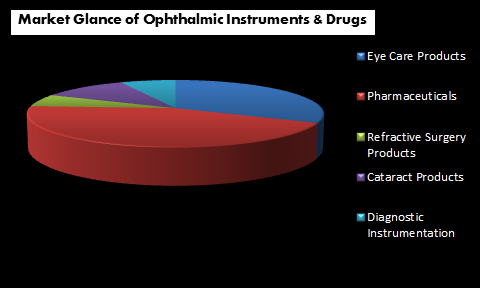
Around 50% population becoming totally blind due to Cataract and more than 70 million people suffer from glaucoma and this number is expected to reach 90 million by 2020. It is estimated that in the U.S. and Europe, this disease affects more than 40% of the population aged 40. However, the economic slowdown and drying pipeline of ophthalmology drugs is restricting the market.
During the forecast period of 2017-2025. In 2016,Asia Pacific ophthalmic drugs & devices market was valued at $11815.02 million, and by 2025 it is expected to reach $20920.43 million . growing at a CAGR of 6.64% during the forecast period of 2017-2025.

The eye drug devices market is divided into two types they are surgery and diagnostics. Drugs market is classified into existing treatment drugs.. The total market is estimated till 2017. This is also measured by formulation types such as capsules, gels, eye drops, ointment, and eye solutions. The drugs market will grow at a slower rate mainly due to the combined effect of loss of patent protection for several drugs and drying pipeline.
Worldwide markets using following economic categories: US, Western Europe, Japan, Other Wealthy Nations, China, India, Latin America, and Rest of the World. This report includes market data for 2017, and forecast market performance through 2022.
Learn More
Top Ophthalmology Universities
Ophthalmology Universities in Asia Pacific and Middle East :
KAIST - Korea Advanced Institute of Science and Technology | Sydney National Seoul National University | Euroscicon | University of Tokyo | Mahidol University | Chinese University of Hong Kong | |The University of Queensland| The University of Western Australia| The University of Melbourne| UNSW Sydney| University of Australia | National University of Singapore | University of Hong Kong | Peking University| Newcastle University | University of Flinders| Euroscicon |University Kyoto | The Hong Kong University of Science and Technology | Euroscicon |Taipei Medical University|Deakin university | University of Canberra | Shanghai Jiao Tong University| Yonsei University.
Ophthalmology Universities in Europe:
Nova Southeastern University College of Optometry | Euroscicon | University of Houston College of Optometry | Illinois College of Optometry | University of Pittsburgh | Yale University ||University of California San Diego. | Euroscicon | University of Missouri - St. Louis College of Optometry | Washington University | Perelman School of Medicine | UCSF School of Medicine | State University of New York College of Optometry Emory | University School of Medicine.
Ophthalmology Universities in USA:
University of Kentucky | Euroscicon |New England College of Optometry | Southern College of Optometry |Northeastern State University Oklahoma College of Optometry | Euroscicon | University of California Los Angeles| Pacific University College of Optometry | Duke School of Medicine| Columbia University| Ferris State University Michigan College of Optometry |UAB School of Optometry | Boston University | Baylor College of Medicine | University of North Carolina Chapel Hill | University of Washington |Johns Hopkins School of Medicine | University of Chicago | Vanderbilt University | Euroscicon | UC Berkeley School of Optometry | |University of Southern California | The Ohio State University College of Optometry | New York University | Nova Southeastern University College of Optometry | University of Houston College of Optometry | Illinois College of Optometry University of Pittsburgh |Yale University | University of California San Diego | University of Missouri - St. Louis College of Optometry| Washington University | Perelman School of Medicine | UCSF School of Medicine | State University of New York College of Optometry| Emory University School of Medicine |
Northwestern University| Institute de microcirugia ocular | Euroscicon |Queen's University of Belfas | University of Hertfordshire | | Canterbury Christ Church | | University of Nottingham | Moorfield’s Chester University | University of Liverpool | University of Bardford | North Umbria | Anglia Ruskin University | Ulster University | Cardiff University |
